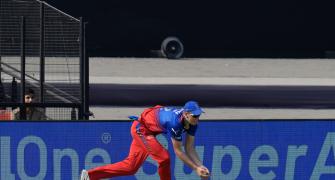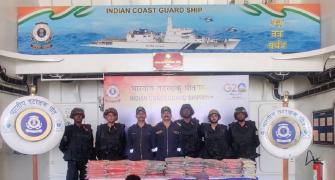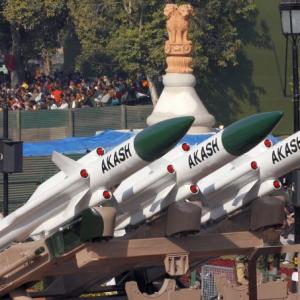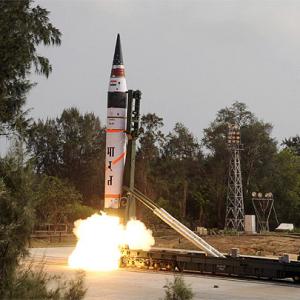Only a handful of missile builders -- in the US, Russia, Europe and China -- have mastered the technologies that go into air-to-air missiles.
India joins that elite group.
Ajai Shukla reports.
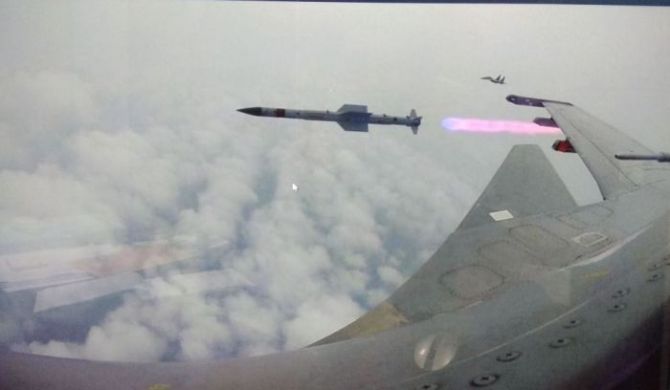
The defence ministry last week announced the successful development of the most challenging missile India has developed so far -- the Astra.
Fired from a fighter aircraft travelling at over 1,000 km an hour, the Astra destroys an enemy fighter 65 to 70 km away.
According to the ministry, the latest round of trials conducted off the Odisha coast on September 11 to 14 saw seven Astra missiles being fired from a Sukhoi-30MKI at pilotless aircraft that were designated as targets.
All seven Astras hit their targets.
This round of tests 'has completed the development phase of the (Astra) weapon system successfully', stated a defence ministry release.
Defence Minister Nirmala Sitharaman congratulated the Defence Research and Development Organisation which developed the Astra; Hindustan Aeronautics Ltd, which integrated the Astra onto the Su-30MKI fighter; and over 50 private firms that participated in building the missile.
The Astra -- designated as a 'beyond visual range air-to-air missile' or BVRAAM -- involves radically different technology challenges compared to ballistic and tactical missiles.
For one, a typical Astra engagement has both the launcher and the target moving at speeds in excess of 1,000 kmph.
Fired from a pylon on the wing of a Su-30MKI, the Astra's smokeless propellant quickly accelerates it to about 4,000 kmph.
The fighter tracks the target continuously on its radar, and steers the missile towards it over a data link.
About 15 km from the target, the Astra's on board radio seeker locks onto the target; now, it no longer needs guidance from the Su-30MKI.
When it reaches a few metres from the enemy fighter, the Astra warhead is detonated by a 'radio proximity fuze', spraying the target with shrapnel and shooting it down.
Only a handful of missile builders -- in the United States, Russia, Europe and China -- have mastered the technologies that go into air-to-air missiles.
India is now joining that elite group.
The Astra is fired from the Russian Vympel launcher -- a rail under a fighter aircraft's wing from which the missile hangs.
The Vympel launcher is integrated with all four of India's current generation fighters -- the Su-30MKI, MiG-29, Mirage 2000 and the Tejas -- allowing the Astra to be fired from all of them.
Astra components that have been developed indigenously. But the missile's seeker head is still imported.
This is a key development thrust for the DRDO. On the drawing board is a longer-range Astra Mark II, intended to shoot down enemy fighters up to 100 km away.
With the Indian Air Force operating 600 to 700 fighter aircraft, there will be a need for several thousand Astra missiles.
With air-to-air missiles costing in the region of $2 million each, the Astra will provide major business opportunities to Indian firms.
IMAGE: Flight tests of the Astra missile fired from an Su-30MKI fighter. Photograph: Kind courtesy @DefenceMinIndia/Twitter





